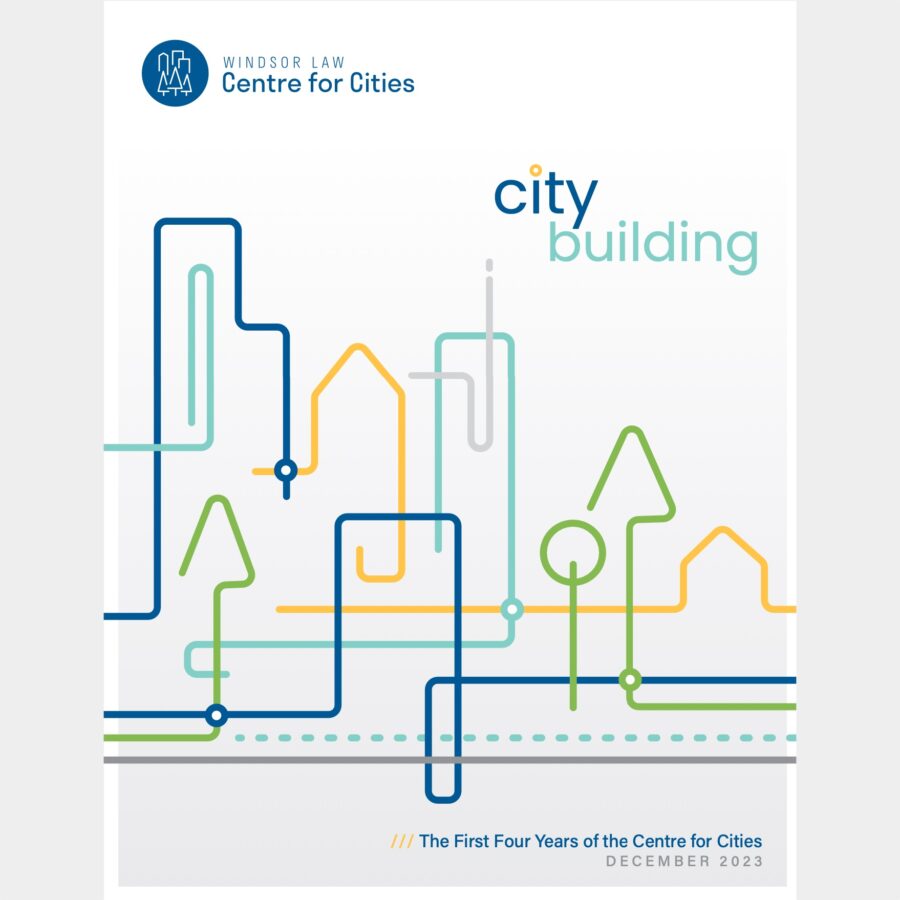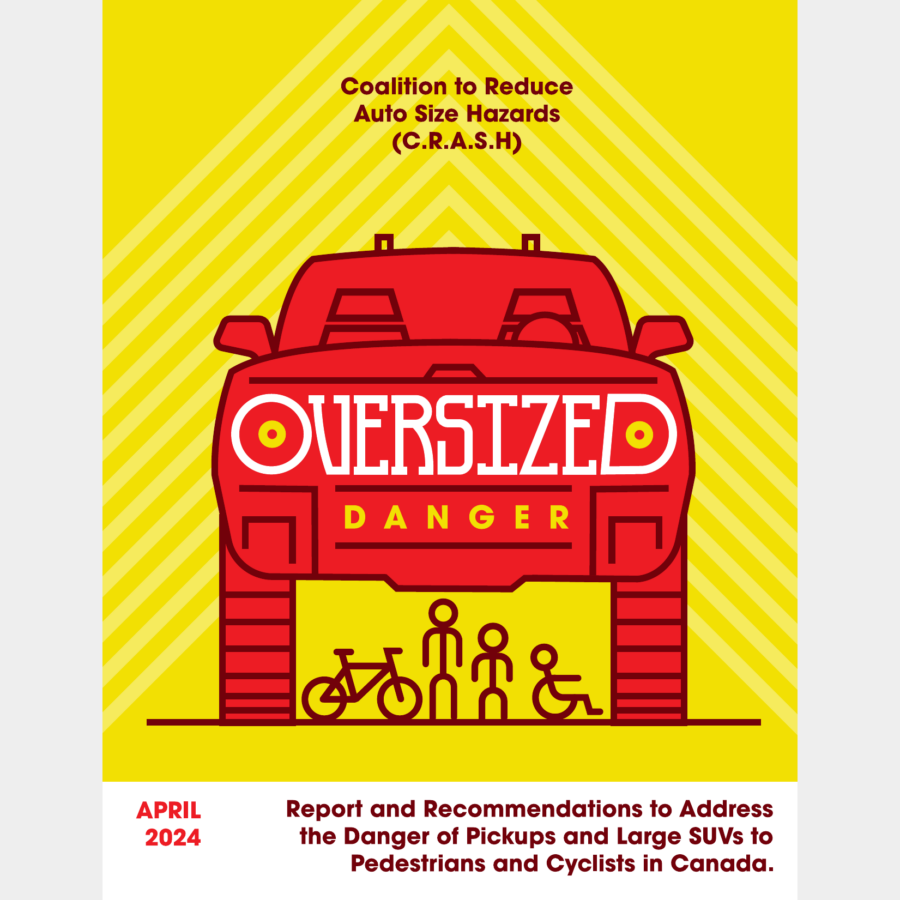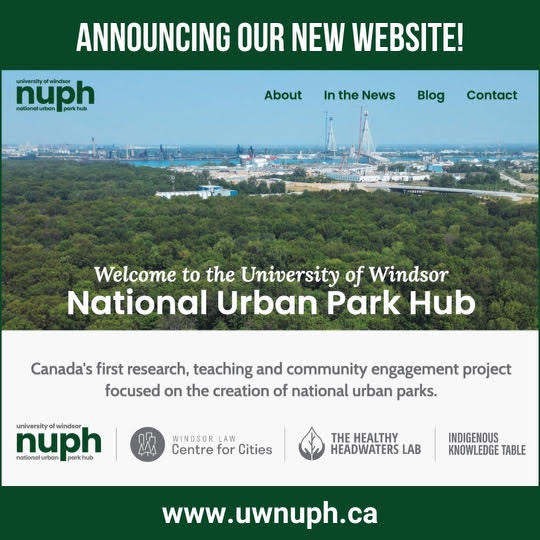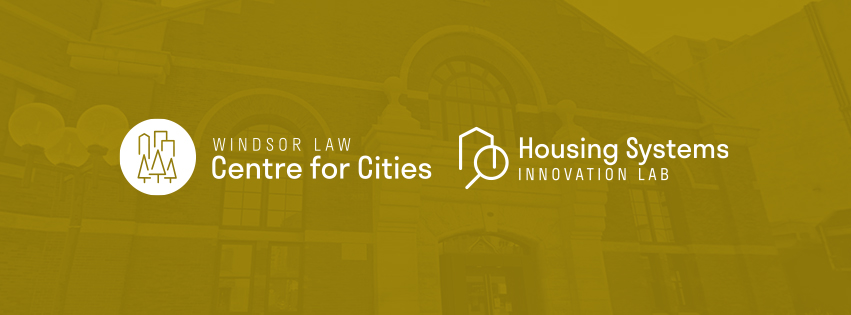
C4C City Building: The First Four Years of the Centre for Cities
(19 December 2023)
It is our pleasure to present this report on the first four years of the Centre for Cities (C4C).
Several paths led to the creation of C4C in late 2019, and these also have framed our growth through the early years. We launched amid a growing recognition of the importance of cities and municipal governance to addressing the most critical issues of our time. Housed in a law faculty, we also saw our unique potential to bring a law and policy voice to city building and urban studies collaborations, at both local and national levels. With a faculty membership that is diverse in both lived experience and expertise, we bring a wide variety of legal lenses to our work. We sought to bring together the threads of research, teaching, and community engagement on cities that many of us were already doing at Windsor Law and UWindsor, and to look at them through the dual lenses of sustainability and inclusion.
An understanding also emerged that the Windsor-Essex region lacked sufficient opportunities for engaged and data-based dialogue and collaboration on the most foundational citybuilding challenges. We saw that being a university-based centre offered the potential to develop a distinct and important role in the wider community on such issues of public importance – not only as a site of “traditional” academic research and teaching about cities, but also in facilitating important conversations, building partnerships, and creating pathways to real community impact and innovation.
There is more that makes us unique. Most Canadian citybuilding research and advocacy still happens in the larger centres – Toronto, Montreal, Vancouver. Yet many of the most interesting things are happening in mid-sized and smaller cities. Being located in Windsor, a city of approximately 220,000, C4C is perfectly placed to focus on research and community engagement that is directly relevant to more modestly-sized cities.

And Windsor is not just any mid-sized city. Being situated right across the river from Detroit gives us a viewpoint on one of the most significant laboratories of modern urban transformation. It also means we sit at the connecting point between Canada and the US. In many ways, Windsor’s character shares as much with the US rust-belt “legacy cities” as it does with its Canadian neighbours. Crossborder collaboration is there for the building, and this plays an increasingly important role in our work. Bringing US-based experts and expertise into our work is natural for us and that cross-border fluidity is unusual in Canada.
Lastly, the way we approach issues and opportunities on a day-to-day basis distinguishes us. For a lot of the “wicked problems” of our age, status quo responses are not working. C4C’s first years have been an opportunity to try new approaches, to innovate, to build new and unusual partnerships. Most of our collaborations have included partners from disciplines other than law, as they seek to understand the legal and policy implications and requirements of their work. We’ve attracted significant external research funding for our work as well, another indication of our thriving and successful partnerships. In this report, we are proud to showcase examples of some of the successes of our first four years, and to signal some of the directions in which we’re heading. As always, we are happy to hear from you – our community partners, colleagues, students, and supporters.
Anneke Smit
C4C Inaugural Director and Associate Professor, Windsor Law
Report design: Spotvin Design + Branding



